Samsung Gear S3: four days of extreme use
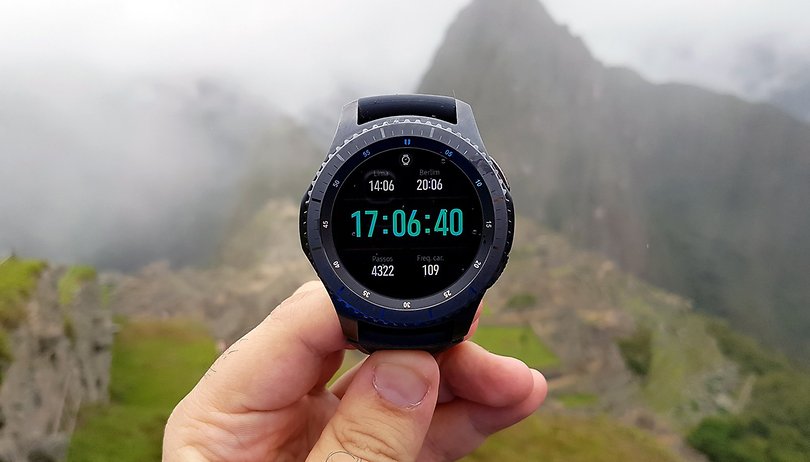

Has anyone not questioned how useful smartwatches really are? Many manufacturers focus on sensors while others invest in alternative systems to Android, which is the case with Samsung. In order to test the features on their new smartwatch, the Gear S3, the South Korean company invited us to Peru, a country known for its altitude and low air pressures. I went for four days testing out every feature on the Gear in activities that, for me, were unusual. I share some of my experiences with you all below.
How the barometer on the Gear S3 works
A barometer isn't a very common among today's wearables, and it's one of the big differences that exists between the Gear S2 and the Gear S3. As soon as we landed in the city of Cusco, I could immediately tell there were major geographic and climate differences compared to other parts of South America. The first ones I noticed were the dry weather and the altitude.
There's no better place to test a barometer than in a city that's more than 3,000 meters above sea level, is there? For example, in a city like Sao Paolo the barometer on the Gear S3 registered 926 hPa (hectopascals). That's hardly surprising given how close the city is to the sea level. When we got to Cusco, this dropped to 675 hPa and later, on a trek we took, the barometer reached only 624 hPa.

Tizen's interface shows your atmospheric pressure history by accounting for both little changes in conditions and even the way your body is moving. Obviously, we didn't have WiFi on top of the mountain but information is stored in the watch and is synchronized to S Health as soon as the user can connect to the internet.
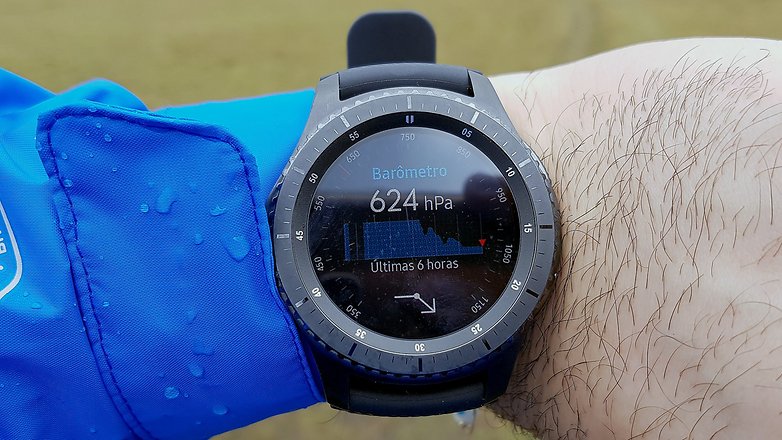
I asked our tour guides about the barometer and altimeter (which measures altitude) readings that they'd seen, and the information on the Gear S3 was very close to what they had seen in the same area. In addition to this, all of the journalists who were on the trek noted the readings on all our Gear S3s were exactly the same.
Of course, going to Peru isn't a realistic option for many people but there are places closer to home where it's possible to explore how the barometer works in this way.
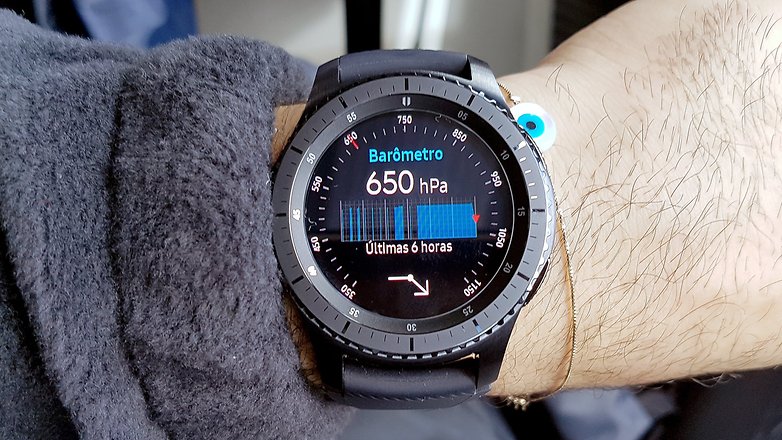
The barometer is also able to give you weather predictions for certain areas. Combined with the altimeter, users have a better idea of what clothes they should wear or how else they can prepare to take a walk or explore certain parts of the city.
Heart rate monitor and step tracker
There aren’t any surprises with these two features. Actually, what really caught my eye was the way the Gear S3 registers your movements. The S Health App creates a daily schedule of how much you exercise. It's also possible to create a step goal or to challenge someone else who also has Gear model. It doesn't help to fake pedal or move your arm to try to trick the movement sensor.
There's no way you'll trick the movement sensor in the Gear S3
Steps are steps, and the Gear is able to identify when users are actually moving. The watch also periodically sends messages encouraging the user to walk or move more. When you reach your goals, the device will send users new messages congratulating them on their achievement. Dancing or going down stairs, for example, also count as steps and these indicators are also added to the daily goals in your exercise plan.
In fact, if you have a Gear and you'd like to send me a goal challenge on S Health, my username for the App is "Salutes". Look how much we walked in just one day - almost 22 km (29,694 steps).
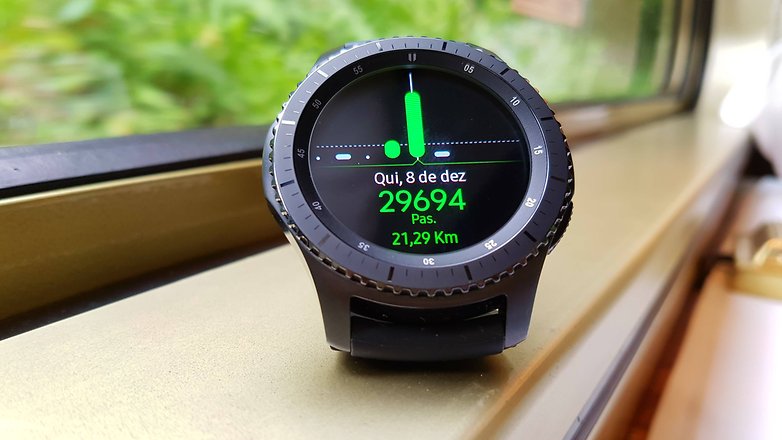
The heart rate monitor on the Gear S3 is comparable to the rest of its market competitors. It never once showed us unrealistic numbers. I did notice that it doesn't always get a reading the first time though. I had to run it a few times before it was able to read my pulse.
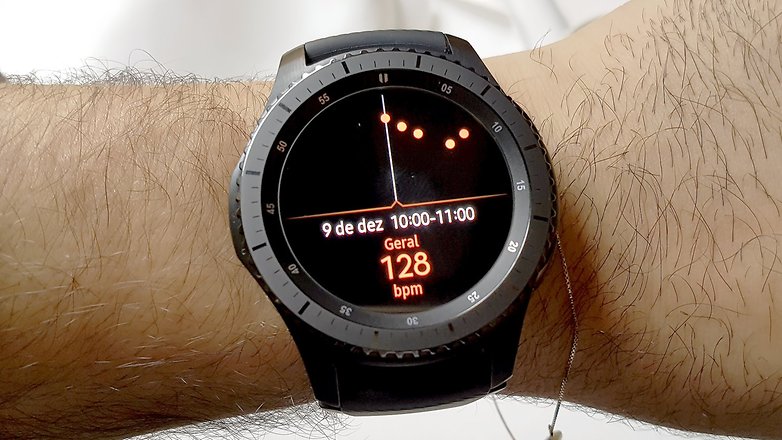
Does synchronizing it with devices from other brands work?
It's not all a bed of roses. The more you use an accessory or device, the more you find out about its inherent strengths and weaknesses. I think this was probably Samsung's idea behind the trip, considering we pushed every feature, hardware and software, to the max.
The GPS is extremely precise, which by the way works off-line and shows the user's current location even when they're on the top of a mountain. However, I did have a small problem with the altimeter, as it mysteriously stopped registering information. The worst thing is that I needed to synchronize the watch with the Gear's App in order to calibrate and enable it but this, at least according to the information on the App, will require a factory reset.
If I were to do that, I'd lose all my exercise history on the Gear and anything else I'd saved on S Health. I chose not to calibrate and synchronize the altimeter at that time so that I could keep the information Id saved. Unfortunately, the altimeter continued being useless, so at some point I had to reset and synchronize it.

Step tracker on the Gear S3
Something else I noticed is that the Gear App can't install all third-party Apps on non-Galaxy smartphones. Samsung Apps and other simple ones, such as maps, run well on the watch when they are paired with any smartphone. However, some games, such as Monster Vampire, don’t install completely.
Apparently, some games aren't able to use the Gear's internal storage. As you probably already know the S3 has its own storage, which makes it more independent from your smartphone. Also, some Apps had difficulties either installing or synchronizing between smartphone and watch.
Conclusion
I mentioned to another journalist who was on the trip with me, Felipe Ventura from Gizmodo Brasil, that the Gear S3 is a complete wearable for those that play sports or are interested in doing some type of exercise. In my opinion, the Gear S3 offers an experience based on three pillars: preparation, monitoring and final assessment.
Users are able to organize themselves with the help of Apps and sensors, register their activities and they can assess their progress. The difference between the Gear and its competitors, such as the ZenWatch 3, is that the possibilities go way beyond what was talked about in this article thanks to a range of sensors and a perfect integration between Tizen, the hardware and S Health.
On the other hand, the battery is about average to what I mentioned in the review on Gear. I can say though, that the Gear S3 is certainly the most complete, offering the best software experience, and the most resistant smartwatch on the market. My intention here isn't to make a final judgment on the product, whether it's worth it or not, but rather to share this unique experience that I had with it.
The Gear S3 is certainly the most complete and toughest smartwatch on the market
Now, I'd like to hear from you: how would you use the barometer and other features on the Gear S3 in your day to day life? Do you think you might invest in a wearable?
Bruno Salutes was invited by Samsung to travel to Peru.














I love my Gear S3 for many of its features but the floor tracking drives me crazy. I owned the fitbit blaze and was spoiled by the accuracy that it tracks my flight of stairs. My S3 does a very poor job of tracking floors. When I do want to use it I must wait to it actually register the floor before doing another run up and down. If I want to do continuous runs, it never count the in between floors. It is very poor.
I don't quite understand why must the Gear S3 sync with the smartphone GPS to calibrate altitude? Doesn't it already have it's own onboard GPS?
It's a cool looking watch , even the UI with the rotating bezel just looks a peg above every other smart watch on the market .
I'm not really a big watch man , but the S3 is calling me .
I've had mine for a month now. I've never been a watch guy, but I can tell you that I am now. It's worth every penny. I downloaded facer 3.0 and now I can choose up to 15,000 watch faces. How cool is that?
Answered tht call alrdy and loving it still can't put it down sorry s7edge but gs3 is sweet to !
Another reason why android wear is dead. Samsung hardware is android. Pebble and moto 360 could never compete with the gear s3 or even gear s2. I think the pixel Watch will be too little too late.
Why did they take you to a remote area? What would this watch do and be like for an everyday person wearing in a normal situation?
They took you on adventure to show you the ability of the watch in an area that most people will never go to. Did you make a call from the watch? It is a stand alone phone! What phone do you use? Android or iPhone?
I wish people that write these articles tell us what phones they use first. Second, tell us if you used in everyday life, not just the extreme adventure. 3rd, be straight because depending on the phone you use you have a basis to Apple or Samsung. Period. It is human nature..
I love my s3 and use the health apps everyday.
The barometer has been nice to have it warn me that bad weatber may be on the way.
Really ive been impressed with the call quality and MST technology. Allowing me to leave my wallet and cell phone securely tucked away in my bag.
I no longer miss text or calls from my wife that id usualy only see after a long day of work.
The LTE call quality is great especially as a hands free device. I dont have to worry about which phone is bluetoothed to the car.
The auto excercise recognition means i dont have to select the workot before i begin. I can concentrate on my workout.
It had the ability to text by drawing with my finger before the apple watch and the voice to text is impressive.
The wheel is easier to use and the widgets are great.
Add the relatively long battery life and I've got a watch i dont plan to switch for quite sometime.
Even without apples larger app library it meets all my needs and more.
Waterproofing is hypery...i mean how many people
1 .) Will Remeber to turn on the waterproofing
2.) Intend to swim in chlorinated or salt water with a nearly $400 watch